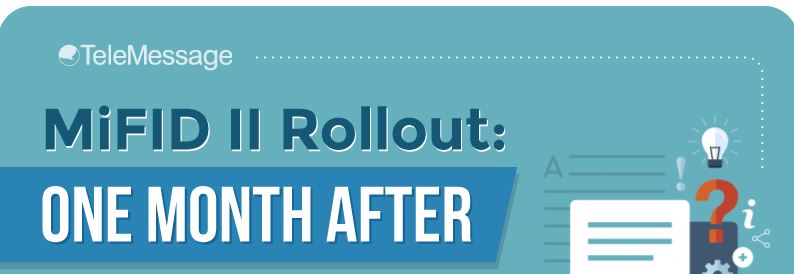The Markets in Financial Instruments Directive II, launched last month, is considered the most critical financial regulation rolled out by the European Union since the onset of the 2008 global financial crisis. In general, MiFID II, together with Markets in Financial Instruments Regulation (MiFIR), aims to regulate the operation of the trading venues/structures across the EU, and ensure transparency of the processes, systems, and governance adopted by market participants.
Contrary to the “apocalyptic” implementation that most markets have expected, the January MiFID II deadline has turned out to be more of “soft launch” type of event. However, the wide-ranging impact of the new directive was felt immediately, within days.
What’s Changed?
1. Systematic Internalisers
One of the MiFID II’s objectives — to increase transparency in trading — is slowly being realized. Systematic Internalisers (SIs), or investment banks which deal on their own account when executing client orders outside a regulated market, have seen their business rocket as dark pool trading volumes have supposedly been stopped and opaque broker crossing networks have been banned.
2. Rules on Research
On the other hand, fund managers in the UK have started to declutter their email and text messages and keep audit trails on every correspondence from investment research companies over fears these could be in breach of MiFID II rules on research. This rule aims to reduce any possible inducement that could be caused by company analysts sending free research to fund-management houses.
Under the rules, fund management firms must not accept external research unless it is paid for. Still, despite this rule, many fund management firms report receiving updates which contain links to URLs of free research from brokerage firms and quoted companies.
Daniel Carpenter, head of regulation of Meritsoft, told Traders Magazine, “While we may now already be one month into a post-MiFID II world, it will only be in the coming weeks and months that the full impact in the research area will be felt,”
“Currently, research providers of all sizes are still reconciling invoicing figures manually against data from clients. Instead, the large majority of these houses are looking to April 1st as the key date in which they will have to implement automated solutions, this being when the first large volume of invoice processing and reconciliations will be processed.” Carpenter said.
3. Recordkeeping
Another important aspect of MiFID II is its tighter requirements that are prompting financial firms to have in-depth programs for more detailed record keeping and for longer periods of time. Adhering to this requirements will involve significant investment in recording technology such as cloud archiving, electronic data storage, and physical record keeping.
If asset managers would like to track and evaluate all research services they are employing and prove that they are truly helping their clients make better investment decisions, then they must adhere to the recordkeeping requirements to manage and track the blocking of unsolicited research and communications from investment research firms.
So Far So Good
With the entirety of MiFID II up for review until 2020, it is expected that regulators will provide more guidance to address challenges that firms are encountering when applying the rule in their operations.

At TeleMessage, we offer our Mobile Archiver that can help financial services leaders to efficiently manage data and content including enterprise SMS, emails, and web and social media content. Our compliant archiving solution is equipped with versioning, and robust governance capabilities that ensure content across all digital channels meet global regulatory requirements.
To learn more about mobile archiving solutions, visit our website today at www.telemessage.com

